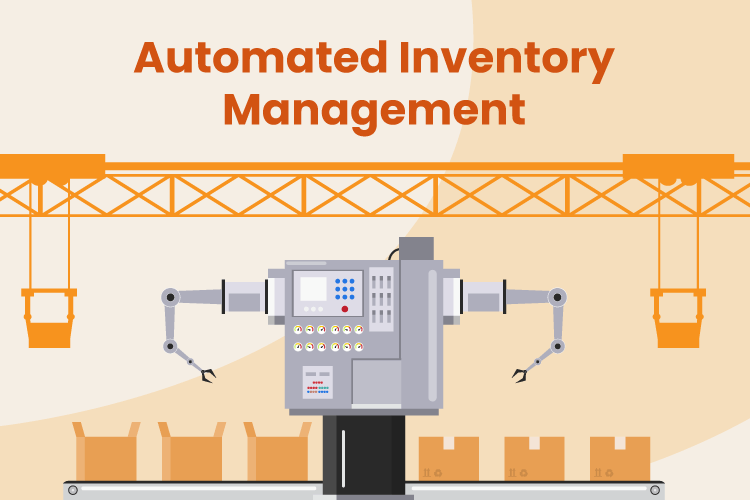Automate inventory control for small business – Automating inventory control is a game-changer for small businesses, offering a myriad of benefits that can streamline operations, save time and money, and boost profits. By embracing automation, businesses can gain significant advantages in accuracy, efficiency, and cost reduction.
In this comprehensive guide, we will explore the benefits, methods, challenges, and success stories of inventory automation for small businesses. With detailed insights and practical tips, you will learn how to leverage technology to optimize your inventory management and drive your business forward.
Benefits of Automating Inventory Control: Automate Inventory Control For Small Business
Automating inventory control can provide numerous advantages for small businesses, including saving time and money, improving accuracy, and preventing stockouts and overstocking.
One of the most significant benefits of automating inventory control is the time saved. Manual inventory management is a time-consuming process that involves tracking stock levels, placing orders, and reconciling inventory. Automation can streamline these tasks, freeing up valuable time for other business-critical activities.
Accuracy Improvements, Automate inventory control for small business
Automation can also improve the accuracy of inventory management. Manual processes are prone to human error, which can lead to incorrect stock levels and inaccurate ordering. Automated systems eliminate this risk by tracking inventory levels in real-time and generating accurate reports.
Avoiding Stockouts and Overstocking
Another benefit of automating inventory control is the ability to avoid stockouts and overstocking. Stockouts occur when a business runs out of a product, resulting in lost sales and customer dissatisfaction. Overstocking, on the other hand, ties up valuable capital and can lead to spoilage or obsolescence.
Automated inventory control systems can help businesses avoid these problems by providing real-time visibility into inventory levels. This allows businesses to make informed decisions about when to order more stock and how much to order, reducing the risk of stockouts and overstocking.
Methods for Automating Inventory Control

Automating inventory control can streamline operations and improve efficiency for small businesses. Here are two common methods:
Software Solutions
Inventory management software can automate various tasks, such as tracking stock levels, generating purchase orders, and managing inventory data. Here’s a comparison of different software solutions:
| Feature | Pricing | Ease of Use |
|---|---|---|
| NetSuite | Starting at $999/month | Advanced, may require customization |
| Fishbowl | Starting at $499/month | User-friendly, suitable for small businesses |
| QuickBooks | Starting at $25/month | Simple and affordable, integrates with QuickBooks accounting |
Best Practices
When implementing an automated inventory control system, consider these best practices:
- Define clear inventory management policies and procedures.
- Establish regular inventory audits to ensure accuracy.
- Train staff on the new system and its functionality.
- Monitor inventory levels closely and adjust reorder points accordingly.
- Integrate the inventory control system with other business systems, such as accounting and sales.
Challenges of Automating Inventory Control
Integrating an automated inventory control system with existing business processes can be challenging. Businesses need to ensure that the new system is compatible with their existing software and hardware, and that their employees are trained to use it effectively. Additionally, businesses need to be aware of the potential for data accuracy issues when automating inventory control.
For example, if the system is not properly configured, it may not accurately track inventory levels, which could lead to stockouts or overstocking.
Overcoming Data Accuracy Issues
To overcome data accuracy issues, businesses should:
- Use a barcode scanner or RFID tags to track inventory.
- Regularly audit their inventory levels.
- Train employees on how to use the automated inventory control system.
Ensuring Security
Automated inventory control systems can be a target for hackers, so it is important to take steps to ensure that they are secure. Businesses should:
- Use strong passwords and encryption.
- Implement firewalls and intrusion detection systems.
- Regularly back up their data.
Case Studies of Successful Inventory Automation
Several small businesses have reaped significant benefits from automating their inventory control. Let’s explore a few case studies to understand how they achieved success.
Case Study 1: Retail Clothing Store
A small retail clothing store was struggling with inaccurate inventory counts and frequent stockouts. They implemented an inventory management software that provided real-time inventory visibility and automated purchase orders.
- Before Automation:Inventory accuracy was below 70%, leading to lost sales and overstocking.
- After Automation:Inventory accuracy improved to over 95%, resulting in reduced stockouts and increased sales.
Case Study 2: E-commerce Business
An e-commerce business was facing challenges with managing inventory across multiple warehouses. They automated their inventory control using a cloud-based inventory management system.
- Before Automation:Manual inventory management led to delays in order fulfillment and errors in shipping.
- After Automation:Automated inventory tracking and order fulfillment reduced order processing time by 30% and improved customer satisfaction.
Case Study 3: Manufacturing Company
A small manufacturing company was experiencing inventory overstocking and production delays due to inefficient inventory management. They implemented a customized inventory control system tailored to their specific needs.
- Before Automation:Excess inventory tied up capital, and production delays hindered growth.
- After Automation:Automated inventory replenishment and production planning reduced inventory levels by 25% and improved production efficiency by 15%.
Closure

Automating inventory control is not just a technological upgrade; it’s a strategic investment that can transform your small business. By implementing an automated system, you can gain a competitive edge, reduce waste, and unlock new opportunities for growth. Embrace the power of automation and watch your business soar to new heights.
FAQ Summary
What are the key benefits of automating inventory control?
Automating inventory control offers numerous benefits, including time and cost savings, improved accuracy, reduced stockouts and overstocking, and enhanced data visibility.
How do I choose the right inventory control software for my small business?
Consider factors such as the size and complexity of your inventory, the features you need, the ease of use, and the cost. Research different software solutions and compare their capabilities to find the best fit for your business.
What are some challenges to consider when implementing an automated inventory control system?
Challenges may include integrating the system with existing processes, ensuring data accuracy, and maintaining system security. Proper planning, training, and ongoing monitoring can help overcome these challenges.
